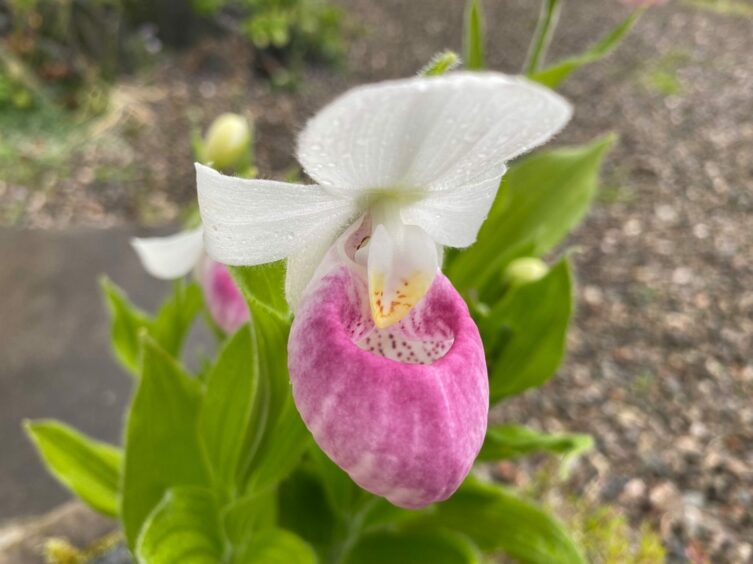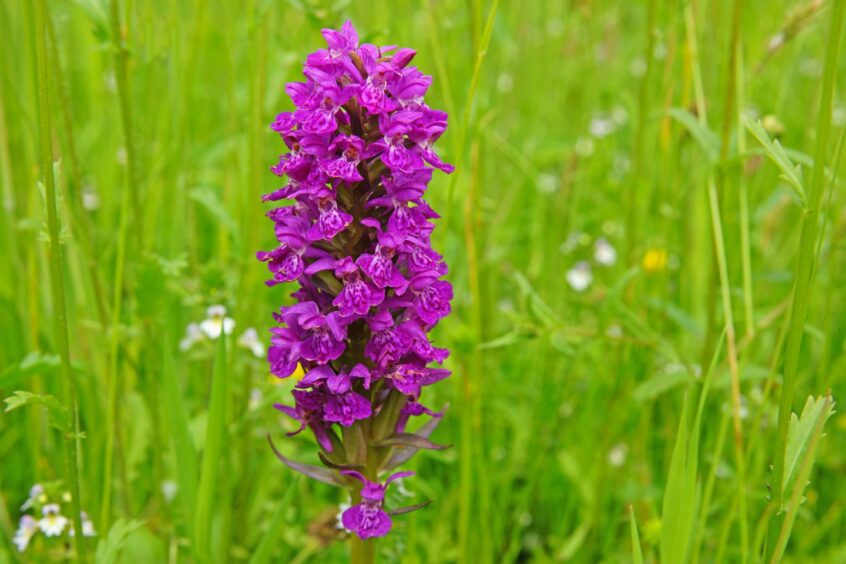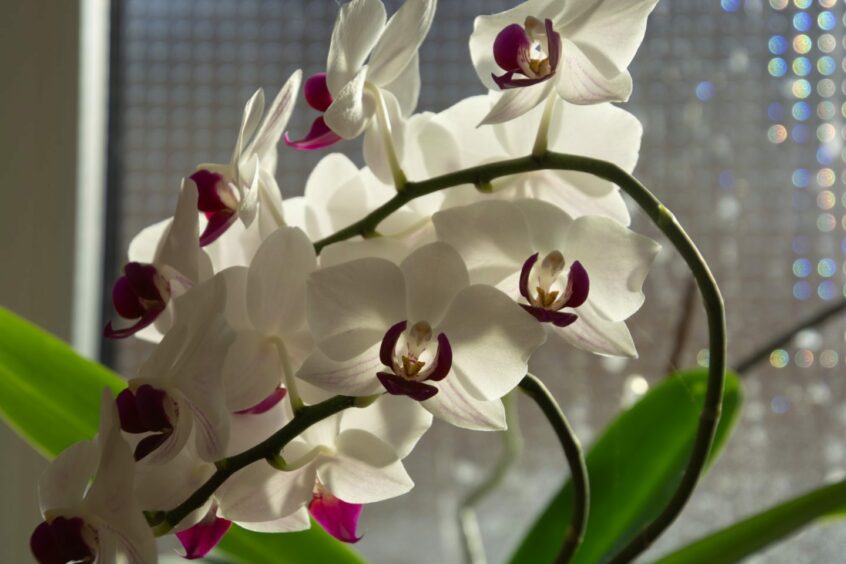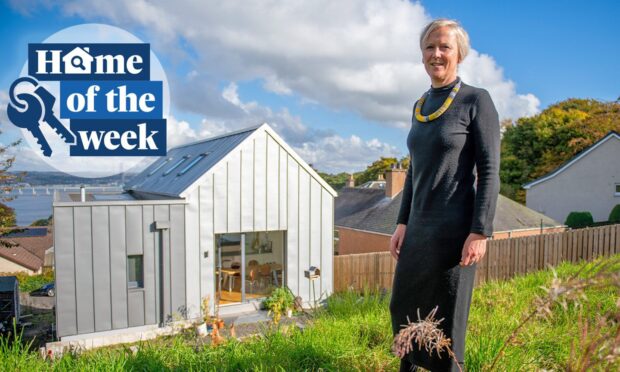It’s been quite an emotional week. For five years I’ve left parts of the lawn in my front garden uncut so I could also let the wildflowers do their thing. Now I’m proud to say I’ve now become the father of a wee orchid.
I’m so chuffed as I’d pretty much given up hope of finding any treasures like this hiding amongst the blades of grass.
But the other evening, as I was running the push mower over the path as I cut through this meadow grass feature, I caught a flash of purple out of the corner of my eye.
And there she was, a marsh orchid. Just beautiful.
I still can’t work out where it came from. If it was lying dormant in the ground for years, not being allowed to strut its stuff from constant weekly grass cutting, then why has it not shown itself earlier?
Around me where I live are plenty colonies of these spikes with flowers that vary from pink through to magenta.
A delicate growth process
The resulting seed are like dust able to be carried far in the wind.
To germinate, the seed need to come into contact with a particular fungi that is clearly in the soil in my area, evident by the amount of similar orchids that grow near me.
From descriptions I’ve narrowed this down to one of two, but with both being so variable I’d need to go further and examine down to finer detail.
I suspect it’s an early marsh orchid but I’m actually not fussed, I’m just so happy to have an orchid now growing in my wee meadow and look forward to see if this will now multiply.
Orchids are the biggest family
Orchids are the largest family in the kingdom of plants with over 25,000 different species growing around the world.
Today we’re probably most familiar with the many cultivars of the tropical Moth Orchid which seems to be the most popular of houseplants today, and available to buy from almost anywhere.
These orchids are so popular because they can actually grow in the comfort of the living room conditions of our homes. They don’t need a sophisticated greenhouse system with heat on virtually all year round.
Exotic, long-lasting flowers
They provide for us with long-lasting, exotic-looking flowers the petals veined, blotched or patterned in colours of white, yellow, light pink through to deep.
These emerge from stems that sprout from the base of the leathery green leaves which are sold attached to small canes for support.
They can be left like this as a nice pot for a side table in the living room.
However, I like to grow these Phalenopsis orchids in a pot that suspends from our ceiling.
The flowering stems are unattached from their supports so they hang down, looking more like how they would growing on branches in their natural tropical habitat.
Two types of orchid
There are two types of orchid, those that grow this way, requiring a host, are known as epiphytes.
They get the moisture and nutrients they need to survive from air, rain and debris that collect around the plant.
The likes of the early marsh orchid that grows on or in soil are known as terrestrials.
I like my garden to be colourful, bright, scented and cheery.
It is filled with many dependable and reliable plants to achieve this.
The ‘lady’s slipper’ orchid
However I’ll always find room for a challenging gem or two and just now I’m enjoying another kind of terrestrial, the showy lady’s slipper orchid, Cypripedium reginae.
As the common name quite clearly suggests the flowers resemble the delicate footwear of a princess, or indeed even the queen herself as the Latin of reginae translates.
From North America, they grow in wetlands and riverbanks although I’d be wary of providing such similar growing conditions here in Scotland.
Especially as the plant I purchased five years ago cost me £25. Sorry Mrs C!
Careful with my ‘lady’
I guess that’s why I adopted a cautious approach and planted it up in an old stone trough.
I’m glad to be doing something right as the plant has bulked up just nicely. It’s situated next to our table and chairs outside, where it’s white flowers with a pink pouch certainly provide a talking point.
As with lots of precious plants these days, they have become rare due to the loss of the habitat they would be found in, mostly down to the actions of us humans. No surprise there.
A word for wild plants
Please don’t go digging up any nice plants to take home that you may see growing in the wild either.
Technically it’s not illegal however you MUST have the landowners permission to do so or you could well find yourself in a spot of bother.
Why do it anyway, for as we now know the chances of our own soil having the qualities needed for it to survive in our own garden are pretty slim.
Leave them alone for others to enjoy and instead seek out a nursery that specialises in terrestrial orchids and purchase a cultivated plant from there.














Conversation